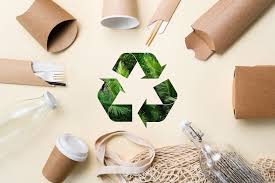The global sustainable packaging market is set for significant expansion, projected to grow from USD 313.73 billion in 2025 to USD 557.65 billion by 2034, at a compound annual growth rate (CAGR) of 6.6% during the forecast period. This robust growth reflects the accelerating transition toward environmentally responsible practices across industries, driven by consumer demand, regulatory pressures, and innovations in packaging technologies.
Invest in Our Premium Strategic Solution: https://www.towardspackaging.com/download-sample/5118
Market Overview: The Era of Green Packaging
Sustainable packaging refers to the use of eco-friendly materials and methods to package, store, distribute, and display products. It prioritizes minimizing environmental impact throughout a product’s lifecycle, including waste reduction, lower carbon emissions, and the use of renewable resources.
In 2022, the total global packaging waste reached 3.6 million tonnes, highlighting the urgency for sustainable solutions. With 76% of consumers actively seeking eco-friendly alternatives, businesses are increasingly shifting from plastic-based packaging to biodegradable, compostable, and reusable materials.
Flexible packaging alone accounted for 29.88 million tonnes globally in 2023, underscoring the growing demand for lightweight, high-performance, and low-waste solutions, especially in the e-commerce sector where packaging efficiency directly impacts logistics and carbon footprint.
If there’s anything you’d like to ask, feel free to get in touch with us @ sales@towardspackaging.com
Key Drivers of Growth
Consumer Preference for Sustainable Solutions
Environmental awareness among consumers has become a major catalyst for change. Brands that adopt sustainable packaging gain a competitive advantage as consumers increasingly align their purchasing decisions with environmental values.
E-commerce Growth Fueling Flexible Packaging
The surge in online shopping has increased demand for packaging that balances protection and sustainability. Companies are investing in innovative materials that reduce weight and waste without compromising product safety during transportation.
Corporate Sustainability Commitments
A large proportion of global companies have announced sustainability pledges, focusing on:
-
Achieving full recyclability and increasing recycled material content (60% of commitments).
-
Reducing overall plastic use (26%).
-
Innovating new solutions to transform packaging systems (14%).
Regional Insights: Asia Pacific and North America Lead the Charge
Asia Pacific: Driving Innovation
Asia Pacific is emerging as a hub for sustainable packaging innovation. Countries like India and China are adopting biodegradable and compostable materials at a rapid pace, supported by stricter environmental regulations and a growing environmentally conscious consumer base.
North America: Pioneering Advanced Solutions
North America remains a key player in sustainable packaging development, driven by government initiatives, strong recycling infrastructure, and significant investments in closed-loop and reusable packaging systems.
Material and Design Trends in Sustainable Packaging
Dominance of Paper-Based Solutions
Paper and paperboard remain the preferred materials due to their widespread recyclability and consumer acceptance.
Emerging Alternatives
Innovations in materials are transforming the landscape:
-
Edible packaging and seaweed-based films.
-
Mushroom-based packaging as a biodegradable alternative to traditional foam materials.
-
Solutions like Greenpackt, offering recyclable, humidity-resistant, and child-safe packaging with significant carbon footprint reduction.
Minimalist and Lightweight Designs
Brands are embracing minimalist design principles, removing unnecessary layers to reduce material use and lower emissions associated with transportation.
Rise of Reusable Packaging
Reusable packaging solutions are gaining traction as companies seek to extend the lifecycle of their materials and minimize single-use waste.
Challenges to Adoption
Despite its potential, the sustainable packaging market faces several challenges:
-
Higher costs of bio-based materials and sustainable production methods.
-
Limited recycling infrastructure in developing economies.
-
Concerns over product safety and quality with some alternative materials.
Addressing these challenges requires coordinated efforts across stakeholders, including manufacturers, regulators, and consumers.
Recent Developments Driving Market Growth
Greenpackt Launch (December 2022)
Greenpackt introduced an innovative approach using fully recyclable materials that enhance production efficiency, ensure humidity resistance, protect child safety, and lower carbon emissions equivalent to saving approximately 4 million trees annually.
Leading Market Players
The market landscape is highly competitive, with key players investing heavily in research and development:
-
Amcor Plc
-
WestRock LLC
-
Berry Global Inc
-
Huhtamaki Oyj
-
Detmold Group
-
Pactiv LLC
-
DS Smith Plc
-
International Paper Company
-
Smurfit Kappa Group PLC
-
Genpak LLC
These organizations are shaping the future of sustainable packaging through technological innovation and strategic collaborations.
Future Outlook
As environmental regulations become stricter and consumer expectations for eco-friendly products grow, the sustainable packaging market is poised to become a cornerstone of corporate environmental strategies. Innovations such as smart packaging, bio-based materials, and circular economy initiatives will play a pivotal role in shaping the market over the next decade.
Companies that proactively adapt to these changes stand to gain not only in terms of market share but also in building stronger brand reputations aligned with global sustainability goals.
Source: https://www.towardspackaging.com/insights/sustainable-packaging-market-sizing





